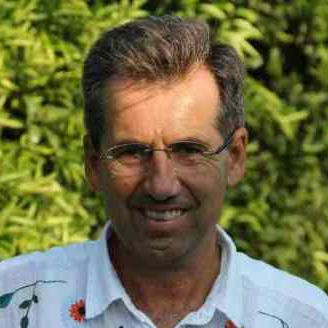Climate Smart Irrigation Management for Sustainable Agricultural Cultivation
A special issue of Water (ISSN 2073-4441). This special issue belongs to the section "Water and Climate Change".
Deadline for manuscript submissions: closed (30 June 2021) | Viewed by 46647
Special Issue Editors
Interests: evapotranspiration; irrigation management; water stress; salinity stress; water use efficiency; sustainable water management; vegetables; irrigation DSS; sustainable fertilization
Special Issues, Collections and Topics in MDPI journals
Interests: evapotranspiration; irrigation management; water quality; ecophysiology; abiotic stress; vegetables; yield quality
Special Issues, Collections and Topics in MDPI journals
Interests: water management in agriculture; irrigation; soil water balance and crop growth modelling; climate change impact; adaptation and mitigation; eco-efficiency
Special Issues, Collections and Topics in MDPI journals
Interests: open field and greenhouse horticulture; soilless cultivation techniques; sensor-based fertigation management; improvement of water use efficiency in horticulture; mineral plant nutrition; composting and reuse of organic waste materials; yield and quality of vegetables
Interests: design, management, and auditing of irrigation; drainage systems
Special Issues, Collections and Topics in MDPI journals
Interests: mathematical simulation and analysis of water resources systems (with emphasis in agricultural uses); soil–water movement; soil–water–plants–atmosphere relationships; water resources management; irrigation techniques; hydroinformatics; spatial analysis
Special Issues, Collections and Topics in MDPI journals
Interests: greenhouse cultivation techniques; soilless cultivation techniques; sensor-based fertigation management in horticulture; improvement of water use efficiency in horticulture; mineral plant nutrition; biofortification of vegetables
Special Issues, Collections and Topics in MDPI journals
Special Issue Information
Dear Colleagues,
On the global scale, only 20% of agricultural land is currently irrigated. Nevertheless, it produces more than 40% of the world’s food requirements. In the years to come, the demand for water in agriculture will continue to grow to meet the increase in food needs for an ever-growing world population. Moreover, the impact of climate variability and change on agricultural production will be enhanced, which will trigger additional water needs in the agricultural sector and a possible extension of irrigated land. However, fresh water resources are limited (especially in irrigated, usually arid and semiarid, regions), where water requirements of other sectors (domestic, industrial, environment) are expected to increase as well. Therefore, the challenge of irrigated agriculture is to produce more food of better quality with less water and with an optimized use of other resources, like nutrients and energy.
To respond to the above challenge, a myriad of climate-smart irrigation options has been under investigation in the last few years, including the adoption of new cultivars which are more resistant to abiotic stresses, the latest generation of monitoring sensors and irrigation management tools, integration of remote sensing and field data to optimize plant response to specific growing conditions, novel management strategies based on sustainable and eco-efficient use of resources, use of anti-transpirants, organic mulching material, soil conditioners, etc.
The general objective of this Special Issue (SI) is, therefore, to gather the results of the most recent research on climate smart irrigation practices and techniques that can be applied to promote sustainable crop cultivation under various pedo-climatic conditions and constraints. In particular, the research topics related to the efficient management of irrigation both in an open field and in greenhouses will be covered in this issue.
All types of manuscripts (original research, reviews, short communications, letters to editor, and discussions) are welcome.
Articles may include but are not limited to the following topics:
- Agronomic practices (e.g., sowing/planting methods, soil management, cultivars) that can lead to water saving;
- Irrigation strategies and techniques that optimize water, nutrient, and energy use;
- Advanced tools, sensors, and monitoring techniques for sustainable irrigation management;
- Use of nonconventional water resources for irrigation (treated wastewater, saline and brackish water);
- Innovative approaches for performance evaluation of irrigation at farm and scheme scale.
Dr. Vito Cantore
Dr. Francesca Boari
Prof. Mladen Todorovic
Dr. Angelo Parente
Prof. Ioannis L. Tsirogiannis
Dr. Nikolaos Malamos
Dr. Francesco Fabiano Montesano
Guest Editors
Manuscript Submission Information
Manuscripts should be submitted online at www.mdpi.com by registering and logging in to this website. Once you are registered, click here to go to the submission form. Manuscripts can be submitted until the deadline. All submissions that pass pre-check are peer-reviewed. Accepted papers will be published continuously in the journal (as soon as accepted) and will be listed together on the special issue website. Research articles, review articles as well as short communications are invited. For planned papers, a title and short abstract (about 100 words) can be sent to the Editorial Office for announcement on this website.
Submitted manuscripts should not have been published previously, nor be under consideration for publication elsewhere (except conference proceedings papers). All manuscripts are thoroughly refereed through a single-blind peer-review process. A guide for authors and other relevant information for submission of manuscripts is available on the Instructions for Authors page. Water is an international peer-reviewed open access semimonthly journal published by MDPI.
Please visit the Instructions for Authors page before submitting a manuscript. The Article Processing Charge (APC) for publication in this open access journal is 2600 CHF (Swiss Francs). Submitted papers should be well formatted and use good English. Authors may use MDPI's English editing service prior to publication or during author revisions.
Keywords
- water use efficiency
- water saving
- DSS
- climate change
- irrigation management tools
- nonconventional water resources











